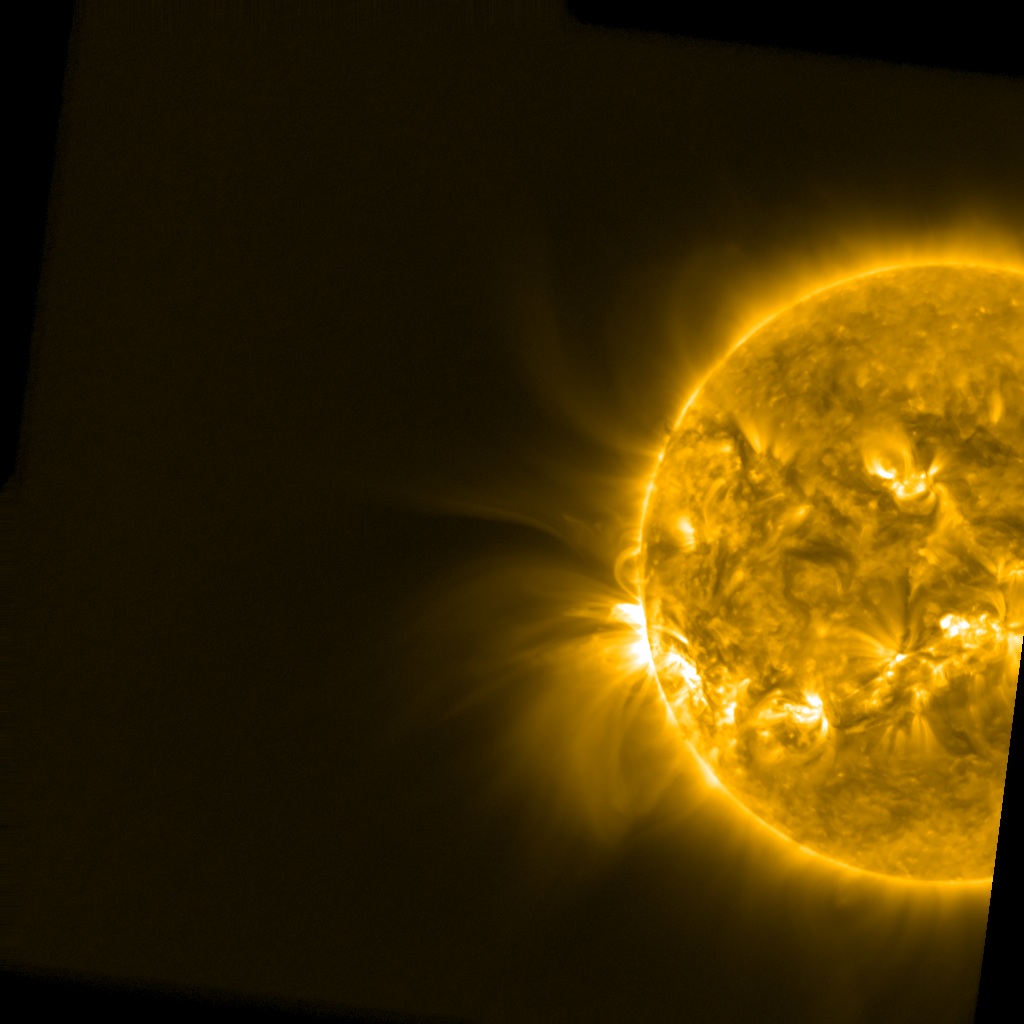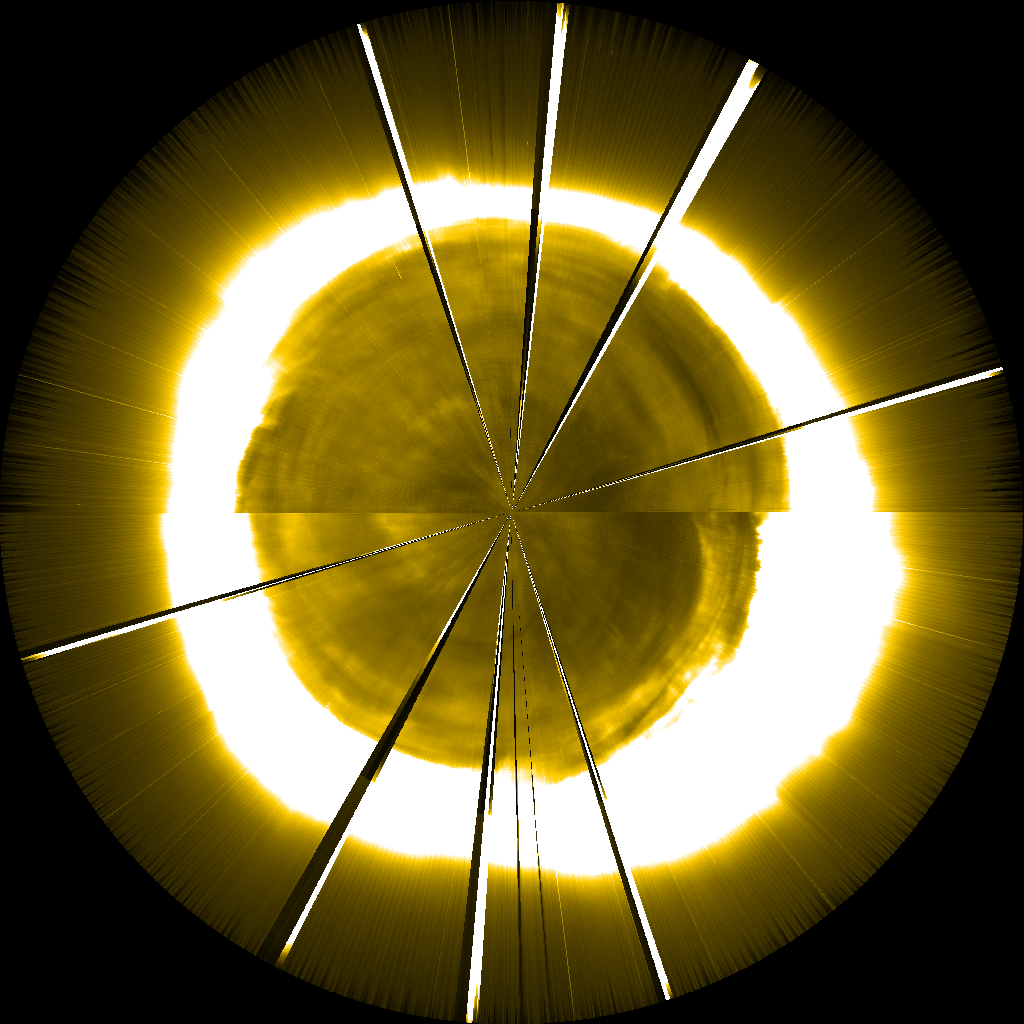Main menu
You are here
MYSTERIES DEEPEN AS COMET ISON FAILS TO MAKE LONG ANTICIPATED APPEARANCE
MYSTERIES DEEPEN AS COMET ISON FAILS TO MAKE LONG ANTICIPATED APPEARANCE
The long-awaited and much-hyped comet ISON surprised astronomers and solar physicists when it mysteriously failed to appear in images from extreme-ultraviolet (EUV) solar telescopes on Thursday. The SWAP solar telescope, on board the Belgium-based ESA mission PROBA2, conducted an extraordinary campaign to image ISON, but failed to detect any sign of the unusual comet.
Previous comets, so-called sungrazers, which follow orbits that carry them to within an astronomical hairsbreadth of the Sun, have appeared bright in EUV images as they raced through the Sun’s atmosphere and skimmed its scorching surface. Comet Lovejoy, which had its own close encounter with the Sun in 2011, was clearly visible in images from PROBA2. Observations of Lovejoy helped shed light not only on comets, but also on the Sun’s magnetically active atmosphere as the comet left a trail that traced out flows along the magnetic field of the solar corona.
Since the first spaceborne solar ultraviolet telescopes were launched in the 1990s, only a handful of comets have passed close enough to the Sun to be visible to these instruments. Scientists at the Royal Observatory of Belgium, which operates PROBA2, had hoped that ISON would be the newest addition to the list, answering questions not only about the Sun and comets in general, but also the origins of the solar system itself.
Comet ISON, which has orbited the Sun among the objects of the Oort Cloud for almost 4.5 billion years, perhaps as much as a light-year away from the inner solar system, has remained largely untouched since the time of the solar system’s formation. Since it was first detected nearly a year ago, astronomers hoped its passage would offer a unique glimpse of the state of our solar system in its earliest moments.
“We made every effort to observe Comet ISON,” said Dr. Daniel Seaton, lead scientist for SWAP at the Royal Observatory of Belgium. “Unfortunately, the comet simply didn’t appear in our images. In principle, we had every reason to think our telescope would see it, so why we did not only deepens the mystery of a perplexing comet.”
Comet ISON, which passed the Sun’s surface at a height of only about 1.2 million kilometers, had already puzzled astronomers with other strange behavior before it reached perihelion, its point of closest approach to the Sun.
“The last comet we saw with SWAP, Comet Lovejoy, passed barely 100,000 km from the Sun’s surface,” said Dr. Seaton. “That’s closer than the Earth is to the Moon. So one possibility is that Comet ISON was simply too far away from the Sun to be visible. There are quite a few factors that determine whether or not SWAP can see something.”
Each UV telescope trained on the Sun has a particular specialty. SWAP’s specialty is its ability to make observations of iron and oxygen atoms in the solar corona as far distant from the Sun as 2 million kilometers, much farther than most other active solar observatories.
“One possibility is that the comet, despite its close approach to the Sun, simply wasn’t composed of material our imager can actually see. Another is that the material evaporated from the comet didn’t reach the million degree temperatures which would allow it to be seen with SWAP,” said Dr. Seaton.
Some scientists speculated that the comet had simply disintegrated as it approached the Sun, but ISON appears at least partially intact as it begins its recession to the deepest reaches of the solar system once again. Dr. Laurel Rachmeler, also of the Royal Observatory of Belgium said that the comet would remain a mystery for solar physicists and other astronomers to puzzle over in the months to come.
“Of course we were hoping to see something a little more spectacular in our telescope,” she said, “but there is still plenty to do before we can solve this little riddle. The suspense for us has passed, but now the fun part starts as we begin to fit all of our information together. ”
As the mystery deepens, scientists around the world continue to train their telescopes and instruments on whatever is left of the receding Comet ISON. SWAP scientists, meanwhile, are left to delve deeper into the puzzle of just why their efforts to image this comet were unsuccessful, unlike ISON’s sungrazing cousin Lovejoy, two years ago.
“It’s a mystery for sure,” said Dr. Seaton, “but a non-detection is still important information. Our hope is that our data — or rather, our lack of data — will be combined with images and observations from the global effort to understand this comet and will help give us new insight into some of the most distant bodies in our solar system.”
###
SWAP Contact:
Dr. Daniel Seaton
Royal Observatory of Belgium
Dr. Laurel Rachmeler
Royal Observatory of Belgium
Additional information about PROBA2:
Additional information and images about PROBA2’s ISON observation campaign:
http://proba2.oma.be/news/no-clues-from-ison
PROBA2’s Observations of Comet Lovejoy:
http://proba2.oma.be/swap/movies/campaign_movies/lovejoy_yellow.mp4
Accompanying image:

A processed SWAP EUV image from the Comet ISON campaign shows no hit of the comet's passage.





